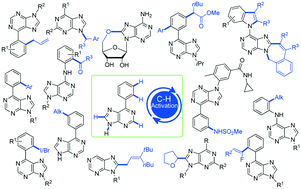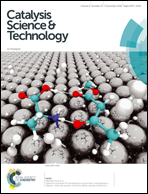Regioselective C–H and N–H functionalization of purine derivatives and analogues: a synthetic and mechanistic perspective
Abstract
Purines, which are heterocyclic compounds built up of fused pyrimidine and imidazole rings, serve as ubiquitous structural cores of nucleic acids (DNA and RNA), natural products, bio-active molecules, and pharmaceuticals. Among a variety of synthetic approaches toward purines, selective functionalization through C–H/N–H bond activation has undergone rapid development in the past few years. Since purines have several C–H/N–H bonds with distinct reactivities, the development of strategies that allow for the regioselective functionalization of purines is a central issue. This perspective offers an overview of the recent C–H/N–H bond activation methods in purine functionalization. The reported methods are categorized according to the type of bond being formed, e.g. C–CH2–, C–CH![[double bond, length as m-dash]](https://www.rsc.org/images/entities/char_e001.gif) , C–C
, C–C![[triple bond, length as m-dash]](https://www.rsc.org/images/entities/char_e002.gif) , C–X (I, Br), C–C
, C–X (I, Br), C–C![[triple bond, length as m-dash]](https://www.rsc.org/images/entities/char_e002.gif) N, C–N, C–Si, N–C. This covers most of the recent advances in the functionalization of C2–H, C6–H, C8–H, N7–H and N9–H bonds of purines, as well as their scope, limitations, mechanisms and practical applications.
N, C–N, C–Si, N–C. This covers most of the recent advances in the functionalization of C2–H, C6–H, C8–H, N7–H and N9–H bonds of purines, as well as their scope, limitations, mechanisms and practical applications.



 Please wait while we load your content...
Please wait while we load your content...